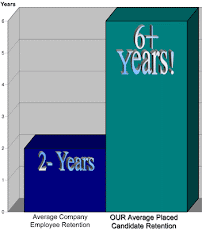Many business owners would be surprised by how much money they lose to suppliers each year. They don’t lose money by paying the supplier a fair price for a product or service; they lose it from billing errors, excessively high supplier pricing, paying for unnecessary items, and inefficiency. Most CEOs are unaware of all the places where money can leak out, and without knowing where the money leaks from, it’s hard to repair those areas. Here are eight of the most common areas where supplier-related losses occur:
- Healthcare costs are not always priced or billed accurately. While premiums are generally tied to your company’s health expense history, sometimes those health histories are inaccurate predictors of future risk, or they contain errors. Additionally, price increases in health care may not reflect competitive market conditions or best plan designs. We often find 5-10% savings by using a healthcare savings methodology that specifically focuses on finding the best competitive pricing for a company’s unique situation. Ten percent savings, when applied to your largest expense after salaries, can represent a large amount of money.
- Telecommunications services typically represent a company’s third-largest expense. Bills are often rife with errors and not competitively priced. Most people have difficulty understanding contracts and bills for voice, data, long distance, cellular, conferencing, and related services; thus, many billing errors go unnoticed. Additionally, the billed price is often not the most competitive price offered by the provider. Companies should have experts auditing and monitoring this expenditure. It’s not unusual to find an average of 30% savings once a company begins to optimize these bills.
- Utility costs for manufacturers, hospitals, and high-energy use, locations are usually the next largest expense. Understanding your energy usage and how you are billed and contracted is the first step toward significant savings. Modern supply management and environmental control techniques can be used to conserve energy use and save on utility costs. For greater savings, companies can bring in environmental engineers to work on energy saving projects, which typically pay off within six to 24 months. Many business can save 15% of their utility costs by combining these techniques.
- Business risk insurance and premiums on coverage such as errors and omission, director and officer, umbrella liability, worker’s compensation, and other policies can often be reduced. Pricing for these products is tied not only to your industry classification, but also to your risk exposure. Reducing your risk exposure can reduce your premiums. Some insurance brokers offer to forgo commissions and take payment as a risk consultant. Their fee is usually similar to the commissions that they would have earned. A business owner wins twice in this arrangement — first, by reducing net savings by up to 20%, and second, by lowering the company’s risk profile.
- Freight costs can be a profit center or a huge cost of doing business. Companies should create a pricing paradigm that covers freight costs or turns those costs into a profit center. Once this is done, companies should pursue freight optimization. It’s best to think in terms of the shippers’ cost of doing business. If you can lower that, then you can lower your own expenses. Small companies can simply ask their carriers what they can do to get lower prices. They can also bid out jobs with multiple carriers. Larger companies should bring in freight experts to understand the companies’ requirements and traffic patterns, then match those through a bid process with qualified carriers.
- Taxes are often over paid by companies trying to be honest when filing their taxes. Most states offer tax credits that many companies could take advantage of, if they were aware of them. Some examples include credits for cost segregation, training, hiring, research, green initiatives and other programs.
- Accounts payable audits can recover expenses a business paid in previous years that were incorrectly invoiced by suppliers or incorrectly paid by staff. These may include overpayments, duplicate payments or incorrect taxes. Cash recoveries are often less than one percent of your total account payable spend, but it can add up to big money. Business owners who really want to add up savings should review procurement and accounts payable together. In many companies, these departments do not even talk to each other.
- Procurement is usually focused on product purchases and tactically tied to “right-price, right-place, right-time” urgency. This paradigm leaves little room for saving money. However, companies can save by strategically managing contracts, supply chains and vendor negotiations. We recently consulted with a large company and found $100 million in technology contracts not tied to a contract management system (used to alert management on expiration dates of leases and automatic renewals). The company renewed these contracts year after year with escalating prices, without renegotiating. Had the company tracked these contracts, it would have saved up to $20 million per year.
What steps can you take?
If your company has less than 50 employees, we recommend the following steps:
- Ask other CEOs, CFOs who they use for insurance plans, telecom solutions and accounting. You may discover trustworthy insurance brokers, solution providers, consultants and accountants who can save you money.
- Ask your suppliers (i.e., broker, healthcare providers, telecom reps, etc.) to review your spend and recommend ways of lowering your costs. It’s not unusual for suppliers to have money-saving programs for which you qualify but aren’t currently enrolled in.
- Source quotes from multiple companies. Creating competition for your business drives down vendor prices.
- Never mistreat or verbally abuse your suppliers over price concerns. You may save a penny but often lose dollars.
- Invoice cost and total cost are different. The lowest-cost service may have poor long-term results that harm your business and cost far more in the long run.
If your company has over 50 employees, we recommend the following steps:
- Consider bringing in an expense management consultant. These consultants specialize in cost management and segregation, insurance, heath care, telecom, contracts, tax credit programs, and other areas. In-house staff can tackle many supplier-related issues to find savings, but they almost always obtain lower results than professionals. Many professional expense management consultants will work on contingency. They take a percentage of the savings they find, rather than a retainer or flat fee as payment.
- If you decide to use in-house staff, start with the highest “spend category” first. Even nonprofessional expense managers can usually find some savings.
- Ask other CEOs, CFOs which service providers, reps and brokers they use. As in any field, there are world class service providers, reps and brokers and there are uninspired ones. The good ones go the distance for you and know how to save you money.
Rules of thumb for when an expense management consultant should be hired:
- Healthcare: When you spend over $250,000 per year
- Telecom: When you spend over $4,000 per month
- Utilities: When you own your building or use high-demand equipment and spend over $250,000 per year
- Business risk insurance: When you spend over $100,000 per year
- Freight: When you spend over $500,000 per year
- Taxes: If you are hiring new employees, doing research, building or occupying your own building or performing measurable training with at least 20 people
- Accounts payable: When your total expenditure is over $50 million
- Procurement: When you spend over $1 million in any one category
Whether on your own or with a specialist, business owners should consider ways of limiting losses as ways to keep more money in the bank. The money you save or recover from supplier-related losses is like an annuity that pays monthly in savings.
Jim Villwock founded IEM Group, Inc. in 2002 after saving companies over $500 million worldwide. Today, his team helps companies with indirect expense management and identity theft solutions.














1 comment:
Many small business owners underestimate the value trusted business advisors (beyond accountants and attorneys) –business consultants and IT consultants – can bring to their companies. They simply see what looks like a high price tag and think about cost rather than investment. This resistance can become a real sales obstacle for consultants and is an objection that needs to be overcome in order to get in and improve small business environments to make them more efficient and profitable. I know that from the perspective of someone that works with and has been an IT consultant, really showing and delivering benefits to small businesses is what is going to drive them to understand how much better they can be and help them stick around long term by taking some of the pressure off them for certain aspects of their business and advising them how to make the best purchases and decisions about technology assets, etc.
Post a Comment